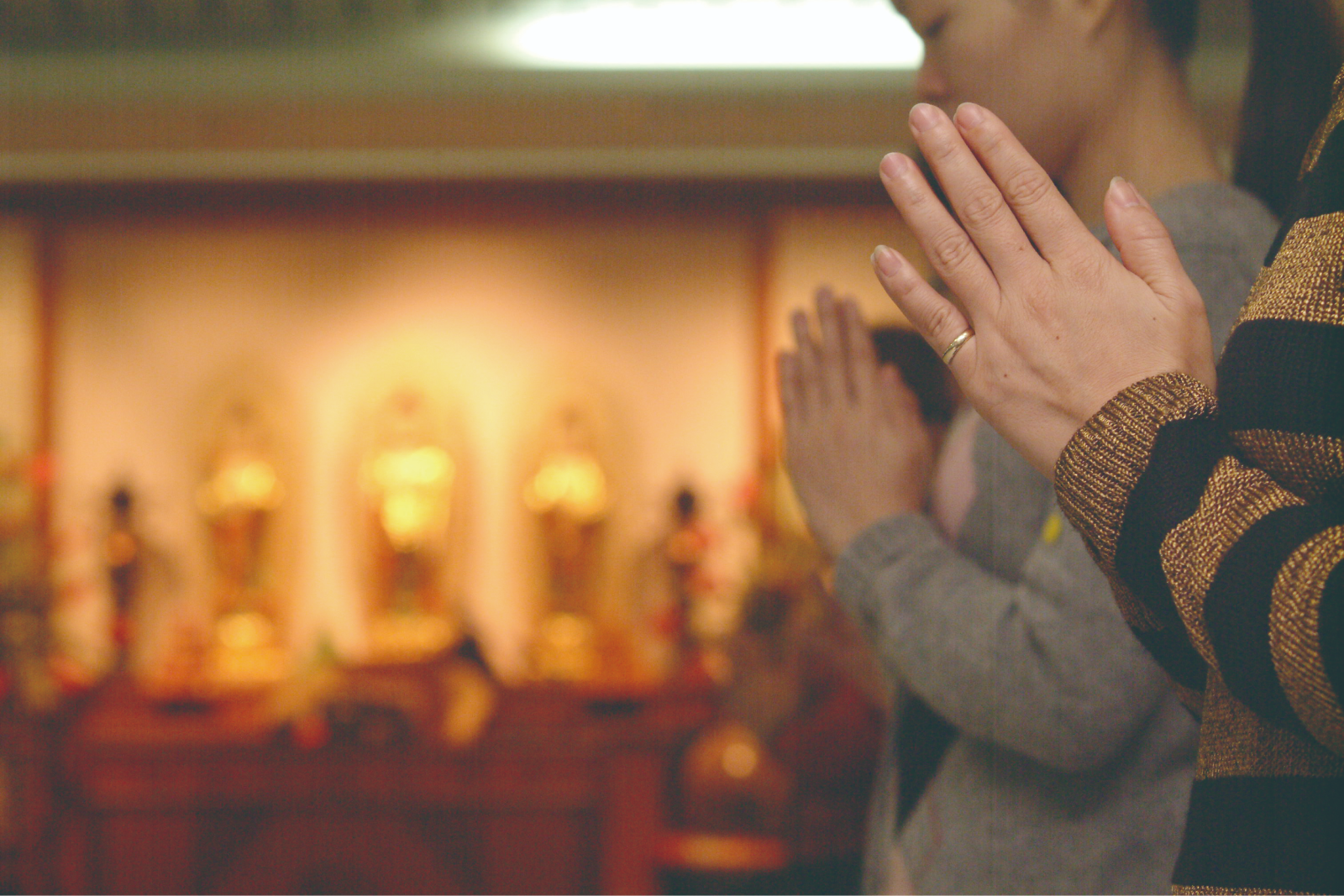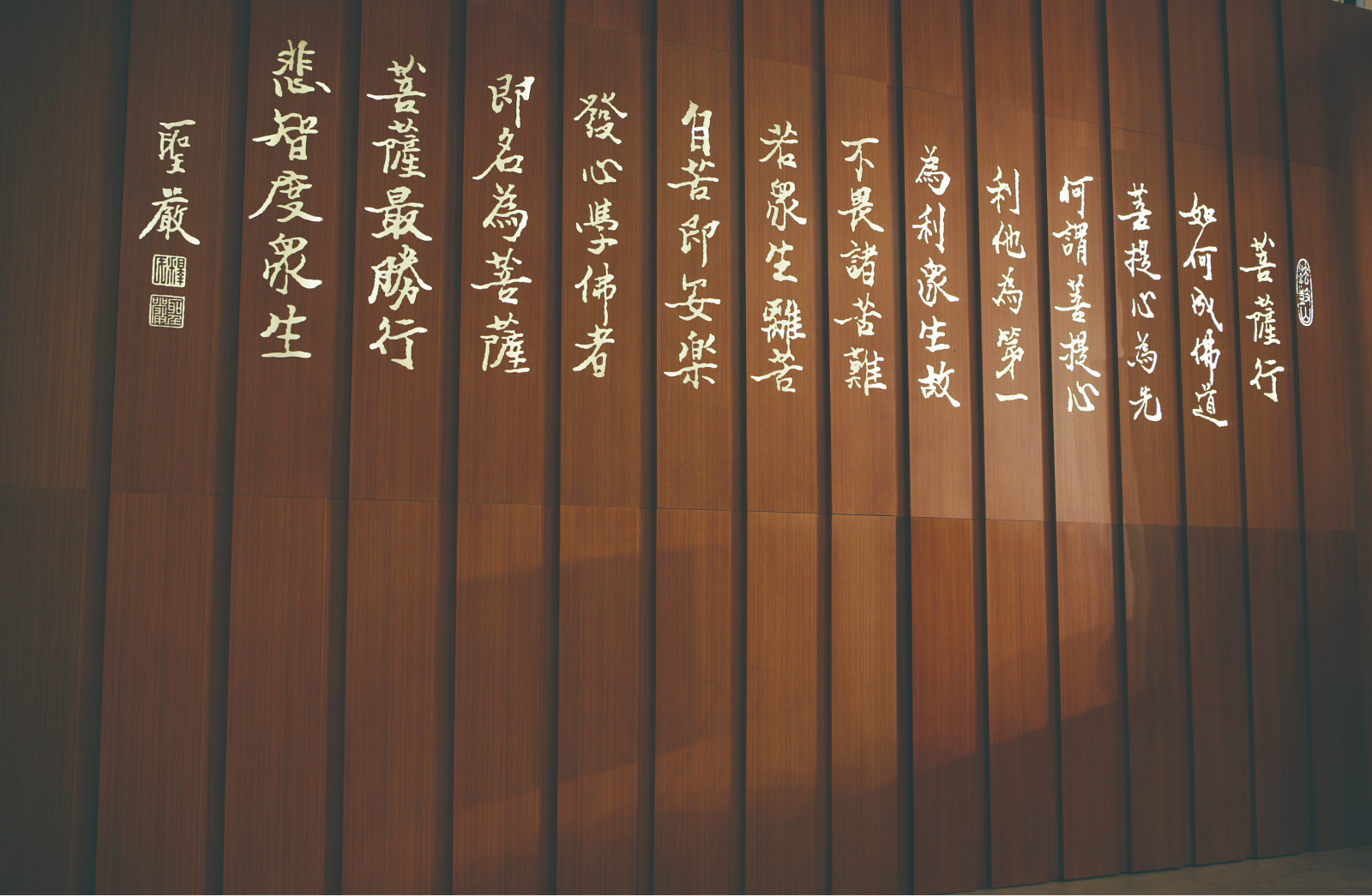Special Topics
Taking Refuge – The First Step to Firm Buddhist Practice
 During a refuge ceremony at a Buddhist monastery, refuge takers stand on their knees before the Buddha statue with joined palms, respectfully requesting the venerable to transmit the Three Refuges and Five Precepts. With the blessing from spectators, they earnestly vow to take refuge in the Three Jewels, observe the Five Precepts, and be Buddhist practitioners throughout their lives. The dignified and solemn ceremony often moves people to tears or fills them with joy. This is because, after a long search, they have finally found the ultimate place to settle their lives, by committing themselves to Buddhist practice.
During a refuge ceremony at a Buddhist monastery, refuge takers stand on their knees before the Buddha statue with joined palms, respectfully requesting the venerable to transmit the Three Refuges and Five Precepts. With the blessing from spectators, they earnestly vow to take refuge in the Three Jewels, observe the Five Precepts, and be Buddhist practitioners throughout their lives. The dignified and solemn ceremony often moves people to tears or fills them with joy. This is because, after a long search, they have finally found the ultimate place to settle their lives, by committing themselves to Buddhist practice.Multiple Misunderstandings that Keep People from Taking Refuge
Despite having volunteered at monasteries or attended Buddhist courses for a while, some frequent temple goers still hesitate to take refuge in the Three Jewels and observe the Five Precepts. So, what are the mental barriers that make them hesitant, uncertain, unwilling, reluctant, or even afraid to enter the Buddhist gate?
As Ven. Chang Yuan of the Dharma Drum Mountain Sangha discovered through his sharing of Buddhadharma with devotees, the main reason that keeps people from taking refuge is lack of understanding or misunderstanding of the Buddha's teaching. "Many people get their impressions of Buddhism from TV dramas or news stories. They mistakenly believe that those who choose to practice Buddhism must show disinterest in the mundane world, and have to spend a lot of time reciting Buddhist sutras, eat vegetarian meals, and live an austere life without engaging in any entertainment or amusement activity. This misconception scares people off."
There are also people who view taking refuge in the Three Jewels and observing the Five Precepts as a restriction, fearing that this will constrain their lives. Therefore, they would rather choose not to take refuge, and, instead, keep wandering outside the Buddhist gate. This is indeed a great pity.
Refuge Ceremony as a Commitment to Buddhist Practice
Regarding misconceptions and myths about the unwillingness to take refuge, Master Sheng Yen has pointed out in his Essentials of Buddhist Sila and Vinaya, written 50 years ago, that these reasons and excuses are merely prejudices. If a person shows appreciation of Buddhadharma but is always reluctant to take refuge in the Three Jewels, then this is in fact equivalent to learning by oneself without proper guidance. The Master made an analogy: "It is like going to school to study. First you need to register at a school; otherwise, you won't have the student status at the school. Even if you insis on sitting in classes, you will never receive a formal diploma or degree."
Why is refuge-taking necessary for Buddhist practice? As Elderly Ven. Yin Shun indicated in his authored book, The Way to Buddhahood, "The Three Jewels represent the overarching guideline of Buddhist teaching. Taking refuge in and venerating the Three Jewels signifies the entry into becoming a Buddhist practitioner, allowing us to access the boundless and inconceivable merit of the Three Jewels. However, without taking refuge, we cannot benefit from it. This is similar to how, without entering a park, we will have no way of admiring the beautiful flora inside. Similarly, for people aspiring to engage in Buddhist practice, they must first take refuge in the Three Jewels."
 The Chinese term for refuge-taking is "gui-yi (皈依)," with "gui" indicating "turning to" or "surrendering to," while "yi" implying "relying" or "trusting." Any action that involves turning to rely or turning to trust, can be referred to as taking refuge.
The Chinese term for refuge-taking is "gui-yi (皈依)," with "gui" indicating "turning to" or "surrendering to," while "yi" implying "relying" or "trusting." Any action that involves turning to rely or turning to trust, can be referred to as taking refuge.Regarding the Three Jewels we take refuge in—the Buddha, Dharma, and Sangha—as explained in Master Taixu's article "Taking Refuge in the Three Jewels" in his authored book "The Bodhisattva Practice": "Refuge takers ought to know that the Buddha is the supreme noble being to be respected; the Dharma is the complete and perfect principle to be practiced; and the Sangha is the purest teacher to be relied on. Thus, we should generate deep admiration and take refuge piously as a Buddhist disciple throughout our lives without converting to any other religion. This marks the bodhisattva-hood of the initial stage with the initial mind on our path of bodhisattva practice."
Why do we need a ritual in order to take refuge in the Three Jewels? Many people think that engaging in Buddhist practice does not require any rituals. Master Sheng Yen described people with such thinking as "someone who has not taken refuge but claims to be a Buddhist. In a way he or she may be able to benefit from the Dharma, but ultimately he or she cannot obtain the recognition and ratification in identity."
By taking refuge, participants can, in addition to receiving the protection from 36 benevolent deities, obtain inconceivable benefits, as mentioned in many Buddhist scriptures. For example, Fascicle 64 of Yogācārabhūmi-Śāstra states, "Refuge takers will attain four merits: first, vast and great blessings; second, great delight and joy; third, samadhi; and fourth, great purity and serenity. Also, they will gain four virtues: first, great completion and perfection; second, alleviation or eternal extinction of all sorts of erroneous beliefs or obstacles to understanding of the Dharma; third, being among wholesome people and masters with virtuous deeds and right attainment; and fourth, being favored and cared for by devas who rejoice at the noble teachings and pure faith." This shows that the benefit of taking refuge in the Three Jewels goes beyond our current life, including having the opportunity to learn from virtuous friends and enjoying the protection by devas and dragons, thereby attaining the ultimate bliss of nirvana.
Learning from the Buddha, and Taking Refuge in the Inner Three Jewels
Ven. Guo Yih, Director of the Laity Education Department, shared that when she just started learning Buddhism, she was actually very "cautious" and adopted a wait-and-see attitude towards refuge-taking. As she recalled with a smile, "At the time, I had started to learn Buddhism, and was working for Dharma Drum Mountain. But I just maintained a reserved attitude about refuge-taking. After eventually taking refuge, I then realized that I had been thinking too much." The Venerable believes that taking the Three Refuges signifies a commitment to engaging in Buddhist practice. We can all learm from the Buddha, whether through Chan practice, Buddhist courses, volunteering, repentance prostrations during Dharma assemblies, or receiving the precepts. In addition, we can learn Buddhism through self-cultivation or group practice, as well as joining a company of Dharma friends and keeping a close relationship with a good teacher.
After taking the Three Refuges and becoming Buddhist practitioners, we should strive to emulate the Buddha, aspiring to develop our wisdom and share the Dharma for the benefit of all beings, just as the Buddha did. We must believe that we have the Buddha-nature and the potential to attain Buddhahood. As we practice in accordance with the Dharma, we will begin to realize it in daily life and benefit from it, thereby substantially transforming ourselves in our daily life. In doing so, we will naturally generate reverence and faith in the Three Jewels from the bottom of our heart, joyfully show gratitude to the Three Jewels, and make steady progress on the path of Buddhist practice. In addition to cultivating these practices, we pray that all sentient beings can also accept the Dharma and take the Three Jewels as the true place of refuge.
To take refuge and uphold the precepts is to receive the blessings of the Three Jewels and the teachings of the Buddha, thus fostering our faith in attaining Buddhahood. This marks a significant and extraordinary foundation for Buddhist practice, worthy for all Buddhist disciples to dedicate their lives to it with conviction, acceptance, and diligent practice.
Related articles:
Taking Refuge – The First Step to Firm Buddhist Practice
Overcoming the Eight Major Obstacles to Taking Refuge
Buddhist Stories on the Auspiciousness of Taking the Three Refuges
Taking Refuge: A Sincere Vow to Engage in Buddhist Practice
Common Questions on Taking Refuge
Refuge Taking Rituals of Different Buddhist Traditions
The Three Refuges Verse for Morning and Evening Services as a Reminder
Resource: Issue 373 of Humanity Magazine, Dharma Drum Publishing Corporation
Translation: Sinag-ling Li (李祥苓)
Editing: Keith Brown, Chia-Cheng Chang (張家誠)
